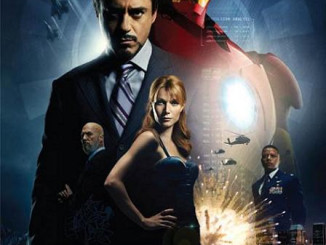 Although much has been written about the numerous films from early in Hollywood’s history that weren’t preserved, the same neglect can happen to more modern films as well. Case in point- writer/director Robert Downey, Sr.’s 1970 counter culture social satire Pound.
Although much has been written about the numerous films from early in Hollywood’s history that weren’t preserved, the same neglect can happen to more modern films as well. Case in point- writer/director Robert Downey, Sr.’s 1970 counter culture social satire Pound.
“It’s a miracle that it’s here,” admits Downey to the near capacity crowd that has assembled to see the film at a rare screening during the 2006 Philadelphia Film Festival.
Set in a New York City dog pound, 18 dogs, played by human actors, wait to be adopted. Part existential comedy, part allegory, the dogs include a punch drunk Boxer (Stan Gottlieb), a hyperactive Mexican Hairless (a scene stealing Lawrence Wolf) and a sleek Greyhound (Antonio Fargas). Meanwhile, the city is being terrorized by a serial killer dubbed The Honky Killer (James Green). Pound also features the debut of performance of Downey’s son Robert Jr. as a puppy temporarily held at the pound.
“When I took this film to the studio, and screened it for the head of the studio, he said he thought it was going to be animated,” Downey states, chuckling. “As ‘punishment’ it ended up on a double bill with a Fellini movie, Satyricon. I was in heaven. (The studio) was ashamed of it. It was X rated, for language. And the same studio that had it had Midnight Cowboy two minutes later. So this thing disappeared.”
Following last year’s screening of Downey’s most recent documentary Rittenhouse Square (2005) and his cult classic race relations satire Putney Swope (1969) at the Festival, programmers approached Downey about bringing Pound to Philadelphia. However, the only print of the film that Downey could locate was found in his “cameraman’s ex-wife’s closet,” explains Downey. “It was a 35mm print that was dead.”
Although the print itself was deemed unprojectable, it was able to be digitally scanned and restored.
“So they put the color back in,” says Downey. “They cleaned up the sound a bit too. Technology is great, it’s just the movies aren’t getting any better. It’s only because of digital technology that some of this stuff can be saved, because most of the colors just go. Most of my stuff in color other than Greasers Palace (1972), I hate the color. I love black and white.”
 Produced as his follow up to Swope, Downey says that Pound had its origins in a stage play he had authored.
Produced as his follow up to Swope, Downey says that Pound had its origins in a stage play he had authored.
“I had written this play once that was a tiny little play done Off-off-off-off Broadway at a movie house at midnight,” Downey states. “I thought, ‘You know that might make a film,’ so I just started working it and working it.”
“It’s awfully hard to beat something that’s written as a play into a movie,” Downey continues candidly. “That’s what’s wrong with it when it’s wrong, to me anyways. I didn’t mind watching it tonight, though. I dreaded this.”
“The problem with turning plays into movies is that people in a lot of plays don’t move,” Downey explains. “They talk. The best adaptation of a play into a movie for me is a film that Billy Friedkin made called The Boys In The Band (1970). It all takes place in one room and the only thing that hurts it – the film just grinds to a halt – is when there’s a phone call a guy has for like five minutes. You say, ‘Wait a minute.’ You’re just waiting because its not theater. But it’s a brilliant rendition of a play into a movie because he had no space, yet he made it work. I don’t know how he did it.”
The screening of the film sent Downey reminiscing back to its production and the actors he worked with. “Just looking at it and thinking that it’s 35 years gone, I’m struck by how good the actors were,” he says. “I think it goes to show you that there are a lot of people around with gifts who you never hear of.”
For the cast of Pound, Downey reunited with several actors from Putney Swope, including Gottlieb, Wolf and Vargas.
“I try to, I guess because Preston Sturges was my hero, use the same people and give them different things to do every time,” says Downey. “Actors love that.”
And as for Pound being the start of son’s own career?
“My kid didn’t even want to do it,” Downey recalls with a laugh.




